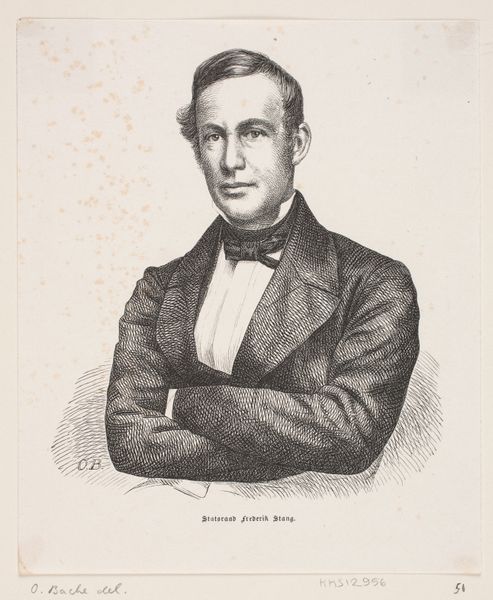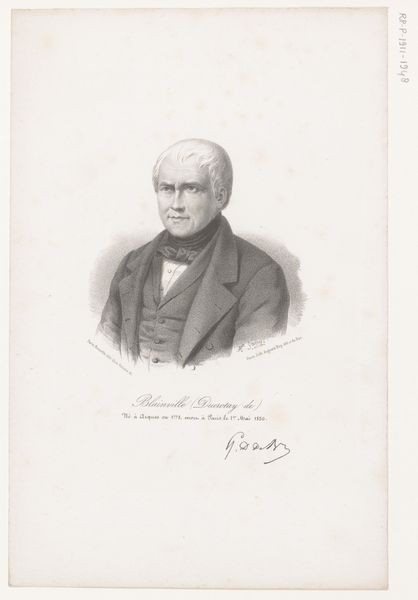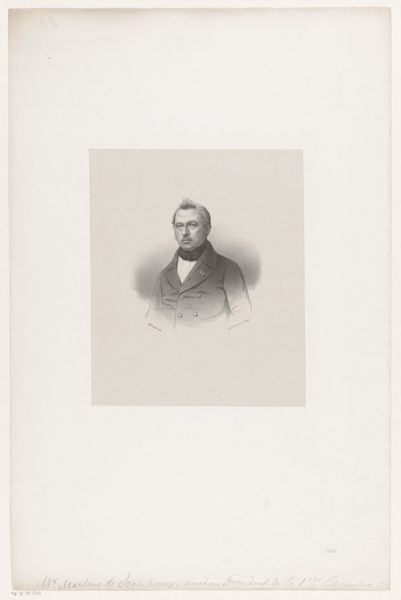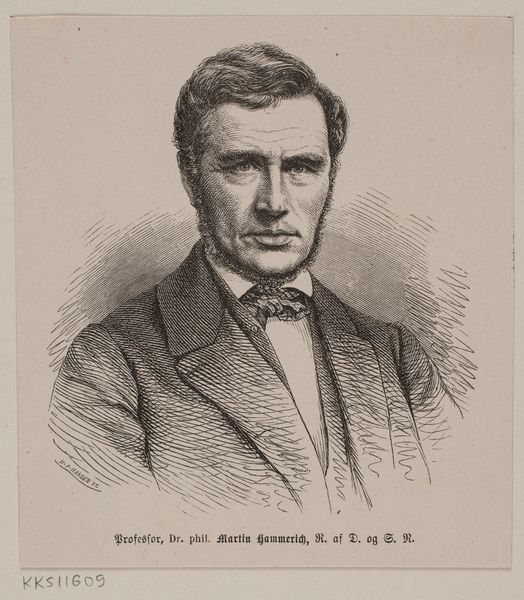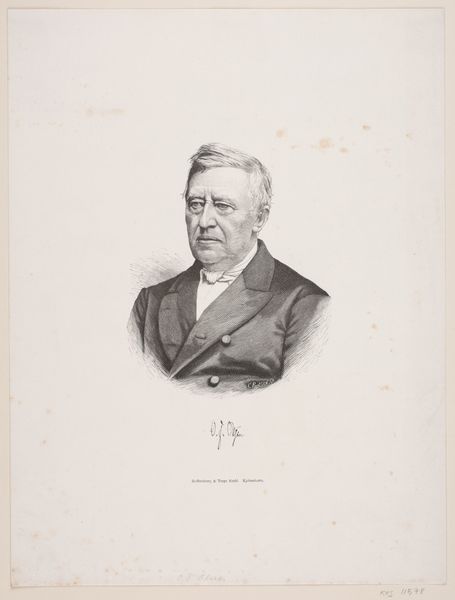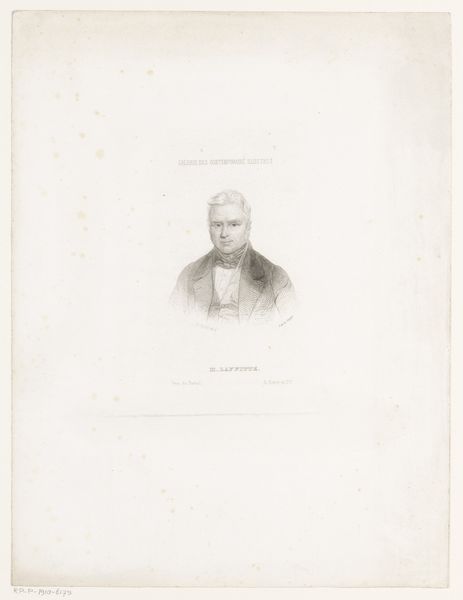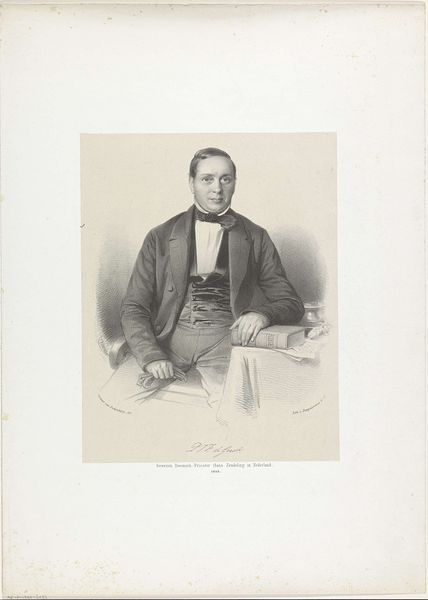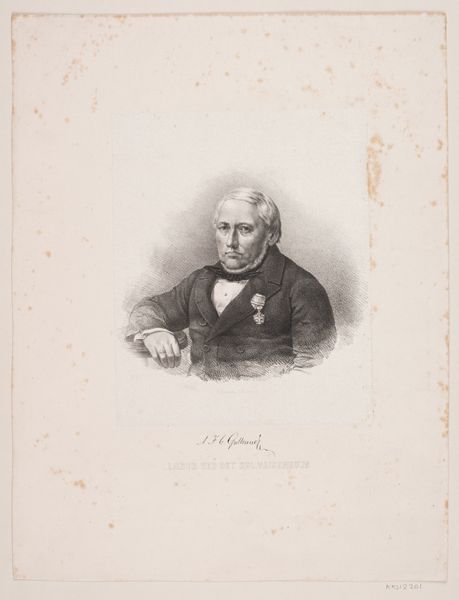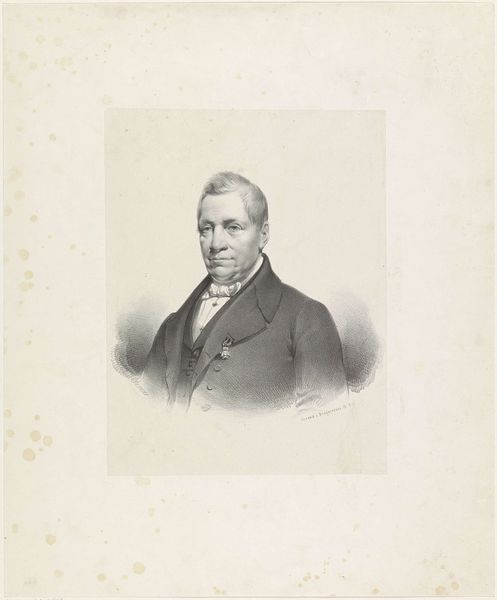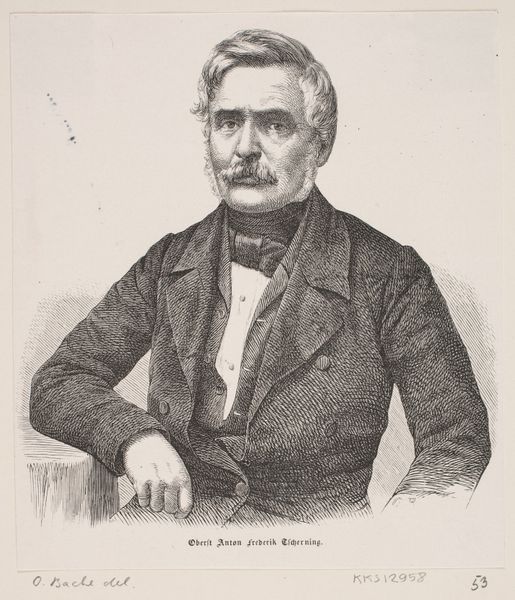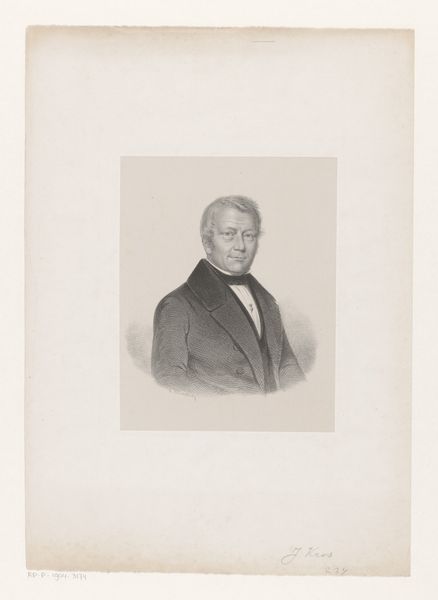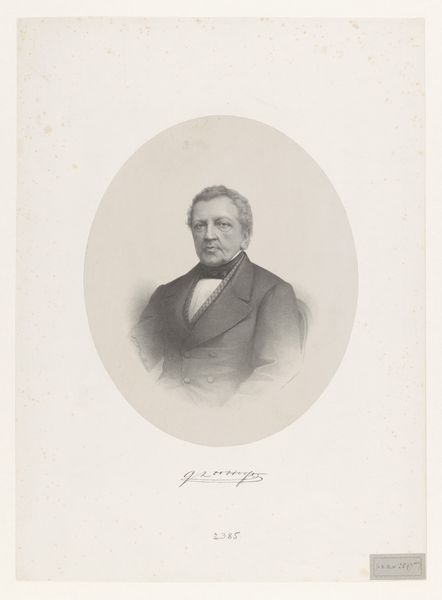
print, engraving
#
portrait
#
pencil drawn
# print
#
portrait reference
#
pencil drawing
#
portrait drawing
#
engraving
#
realism
Dimensions: 190 mm (height) x 190 mm (width) (bladmaal)
Curator: Here we have an engraving from between 1861 and 1865, titled "W.C. E. Sponneck," currently residing at the SMK, Statens Museum for Kunst. The artist is A. Dorph. Editor: My initial reaction is of formality and reserve. The tightly controlled lines and limited tonal range project an almost austere image. It speaks of authority and perhaps even a degree of inflexibility. Curator: Engravings such as this one, often mass-produced, served as vital tools for disseminating images of prominent figures in society. Sponneck held significant political and social influence, and possessing his likeness conferred a degree of status. We might interpret his stern gaze, within the context of realism, as the symbols for the strength that was sought-after at the time. Editor: It’s interesting that you highlight its symbolic use in bestowing the collector with social influence, because such portraiture also cemented very fixed ideas around societal hierarchy. Take, for example, his very buttoned up jacket and carefully groomed whiskers: The details performative; they were literally manufactured with very real effects on power. Curator: Precisely. Note how the engraving, rendered with meticulous detail, employs the formal language of realism to create an image intended to resonate deeply with established ideas. What does it signify for contemporary audience in your view? Editor: Now, seeing this today, in a world grappling with very visible disparities, it serves as a stark reminder of the entrenched power dynamics prevalent in the 19th century, prompting questions around its very creation and reproduction. Whose stories were amplified then, and whose were actively erased? It’s still resonant because we haven't entirely shed that paradigm, you see. Curator: That provides an illuminating perspective. It brings the artwork from that time, and makes it resonate within the realm of contemporary debate. The rigid composure, amplified by the technical choices, reveals the weight of social and cultural narratives and its power over time. Editor: The careful strokes and shaded areas, though seemingly straightforward, reflect much deeper power structures, impacting far beyond just the subject of the portrait itself. I feel the portrait gives insights that are important for us, even now.
Comments
No comments
Be the first to comment and join the conversation on the ultimate creative platform.

